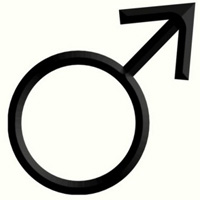Effects of COVID-19 on male sex function and its potential sexual transmission

Accepted: October 5, 2020
All claims expressed in this article are solely those of the authors and do not necessarily represent those of their affiliated organizations, or those of the publisher, the editors and the reviewers. Any product that may be evaluated in this article or claim that may be made by its manufacturer is not guaranteed or endorsed by the publisher.
Authors
Introduction: Severe Acute Respiratory Syndrome Coronavirus 2, (SARS-CoV-2) was first identified by the Chinese Centers for Disease Control and Prevention on January 8, 2020 and was declared as a global pandemic on March 11, 2020 by WHO. SARS-CoV-2 uses the Angiotensin-converting enzyme 2 (ACE2) receptor as an entry route, associated with the transmembrane serine protease protein (TMPRSS2), which makes the testis and particularly spermatogenesis potentially vulnerable, since this tissue has high expression of ACE2.
Material and methods: We performed a systematic literature review by electronic bibliographic databases in Pubmed, Scopus and ScienceDirect up to August 2020 about the effect of SARS-CoV-2 on male sexual function and its transmission, to assess possible repercussions on sex organs and the existence of a sexual transmission path.
Results: Although SARS-CoV-2 presence has not been found in testicle samples, it has been demonstrated that it causes histological changes compatible with orchitis, and sex hormone disturbances. TMPRSS2 is up-regulated in prostate cancer where it supports tumor progression, thus these patients may have a higher risk of SARS-CoV-2 infection. TMPRSS2 inhibitors may be useful for the treatment or prevention of COVID-19. No viral material has been found in blood or semen, however it has been proven to be present in stool and saliva.
Conclusion: The male reproductive system would be highly vulnerable and susceptible to infection by SARS-CoV-2 given the expression of the ACE2 receptor in somatic and germ cells. The seminal fluid would remain free of viral presence in patients with COVID-19. Regardless, non-genital sex could be an important source of viral transmission. In assisted reproduction techniques all necessary tests must be carried out to ensure the donor is free of the virus at the time of collection and handling of the seminal sample.
How to Cite
PAGEPress has chosen to apply the Creative Commons Attribution NonCommercial 4.0 International License (CC BY-NC 4.0) to all manuscripts to be published.

 https://doi.org/10.4081/aiua.2021.1.48
https://doi.org/10.4081/aiua.2021.1.48



